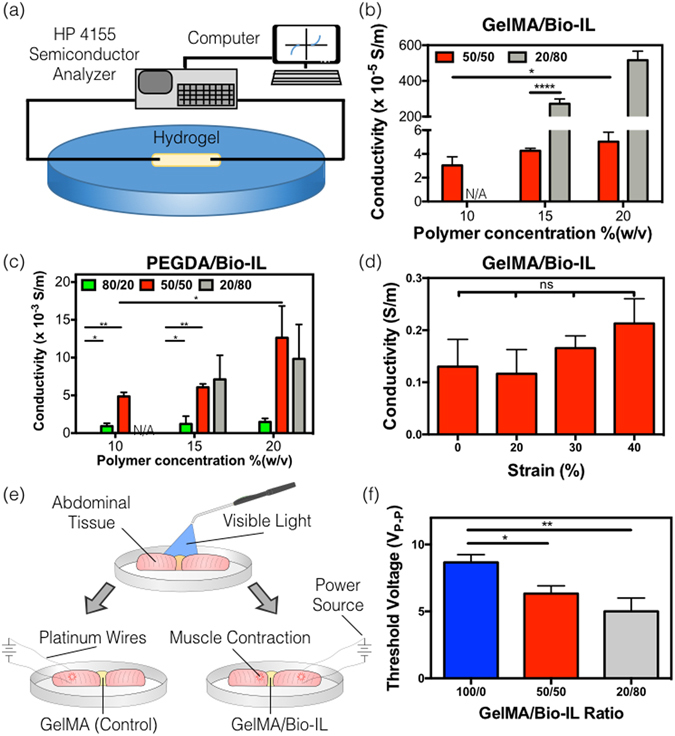Figure 2.

Electrical conductivity of the engineered polymer/Bio-IL hydrogels crosslinked by visible light. (a) Experimental set-up of the two-probe electrical station used to measure the electrical conductivity of the engineered hydrogels. Conductivity measurements of Bio-IL conjugated (b) GelMA and (c) PEGDA hydrogels at different polymer concentrations and polymer/Bio-IL ratios (1% VC, 1.5% TEOA, 0.1 mM Eosin Y, and 120 s exposure to visible light were used to form GelMA and PEGDA hydrogels). (d) Electrical conductivity of 15% GelMA/Bio-IL composite hydrogels at 50/50 ratio, which was stretched up to 0%, 20%, 30%, and 40% strain level demonstrating no significant changes in conductivity after stretching. (e) Schematic of ex vivo experiments performed using rat abdominal muscle tissues, connected using 15% final polymer concentration and 50/50 GelMA/Bio-IL ratio, and pure GelMA hydrogels (f) Threshold voltages at which contraction was achieved using 15% final polymer concentration GelMA/Bio-IL at 50/50 and 20/80 ratios, as well as pure 15% GelMA hydrogels. Error bars indicate standard error of the means, asterisks mark significance levels of p < 0.05 (*), p < 0.01 (**), and p < 0.001 (***).
